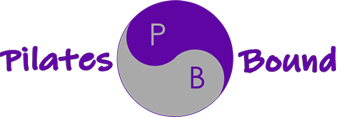Pilates Principle: Center
Pilates Principle: Center
For the next few months, I want to do a deep dive into each of the Pilates principles. There are 6 guiding principles: breath, concentration, center, control, flow, and precision. I covered breath and concentration at the beginning of the year.
Let’s get into our CENTER, and its relationship to Pilates!
During my teacher training program, there was required reading, and they were 2 books written by Joseph Pilates. One book he wrote titled “Return to Life Through Contrology” was published in 1945, and so much of it still applies today. I want to share with you 3 excerpts I highlighted regarding the center. These 3 excerpts really speak to me on the different definitions of center.
Contrology is complete coordination of body, mind, and spirit.
The first excerpt is a bit esoteric of a connection in that it’s a feeling of balance or being centered that’s embodied.
Contrology develops the body uniformly, corrects wrong postures, restores physical vitality, invigorates the mind, and elevates the spirit.
The second excerpt, particularly the beginning of the sentence (“develops the body uniformly”), can be seen as the body’s center of gravity, and how the body’s mass is distributed, and how to keep your center of gravity balanced or centered when we’re talking about the left and right sides of the body, or the upper and lower parts of the body, or the front and back sides of the body.
One of the major results of Contrology is gaining the mastery of your mind over the complete control of your body.
The third excerpt is where I want to do a deep dive. Pilates is a mind-body exercise, so let’s talk about the center as it relates to the muscles of the core, sometimes referred to as powerhouse. The energy from which all movement should come from.
When I think of core or powerhouse in Pilates, I think of the abdomen and the hips. The area from the ribcage to the hip points in the front, and to the base of the buttocks in the back, while including the pelvic floor muscles.
However, when I think of center in Pilates, I think of the core PLUS more. The muscles that encompass our abdomen, run along our spine, surround our pelvis, shape our outer hips, and define our inner thighs. Also, our spine includes our neck. It’s unfortunate we have 2 names here because either the neck is forgotten, or it’s overused incorrectly. That’s a lot of CENTER to manage our limbs (arms and legs), and hold our head up.
So, when I hear core stability, core control, stronger core, I think of the ability to keep the center in a desired position while moving the limbs or the whole body around in space, in air (with no feedback) without any distortions or compensations. How well does the body hold itself up? Is a particular side favored? How much leaning is there? In a given exercise or movement, is the low back arched or tucked? Can it maintain length? In a given exercise or movement, is the pelvis moving, shifting, rocking? If so, how much? Can it maintain strength? In a given exercise or movement, how much is being initiated by only the arms and legs? How mobile are the joints? How stable are the shoulders? How flexible is the spine? What is rigid and what is mobile? Can the exercise or movement start from the center of the body, and reflect out through the limbs? What is the head’s position in relation to the body?
As you can see, a lot of questions pop up for the core, the powerhouse, and the center. By placing a body on an apparatus, it becomes obvious how a body moves, and where it moves from. Through the fixed position of being on an apparatus, and working with springs to open and close, not only can you see what’s happening in a body, but you can bring awareness by sound and by feeling of the springs. With a strong center, the springs are controlled as they open and close. When the springs are not controlled, that means we’ve lost some connection or engagement through our center, and now the springs open or close from our joints, not our muscles. Ever heard a spring bang, clang, crash, boom, <insert your word choice for a loud noise>? If yes, reflect on what muscular engagement/connection(s) turned off that most likely was absorbed through joints.
You may have heard the phrase that in Pilates we move from our center out. The use of springs in the apparatuses used in Pilates really highlights the use of your center in concentric and eccentric movement through all the Pilates exercises. This is also why the mat exercises are the hardest to practice because we have no springs on the mat.
We won’t know our center until we practice moving from our center. Let’s get moving! Here’s a blog I wrote about making Pilates connections, so practice those connections to find your center.
If you’re ready to work together to build and strengthen these connections in your center, come see me at my home studio.
Disclaimer
Your use of the Service is at your sole risk. The Service is provided on an “AS IS” and “AS AVAILABLE” basis. The Service is provided without warranties of any kind, whether express or implied, including, but not limited to, implied warranties of merchantability, fitness for a particular purpose, non-infringement or course of performance.
The exercises on this website are for educational purposes only and not meant as prescriptive for a specific injury or goal. You assume all responsibility for yourself, and any and all injuries or damage you cause in relation to your doing of these exercises. By using this website and performing these exercises you release from us of any and all liability or responsibility.
